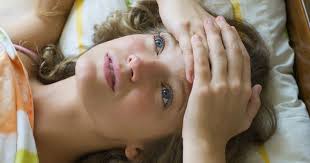Treatment for Excessive Sleepiness
Excessive daytime sleepiness (EDS) is the tendency to fall asleep during the daytime1 when one is expected to be awake. EDS can impact alertness, concentration, attention, and overall health. This health concern affects up to 18% of the U.S. population2. EDS is not a sleep disorder in itself; instead, it is a symptom of other sleep-related disorders.
What Are Common Causes of Excessive Daytime
Sleepiness?
The following sleep
disorders commonly cause excessive daytime sleepiness:
·
Sleep apnea and other sleep-related breathing disorders
·
Narcolepsy with or without
cataplexy
·
Insomnia disorders, particularly in adolescents
·
Circadian rhythm disorders such as delayed sleep phase
·
Restless leg syndrome (RLS) and periodic limb movement disorder
·
Insufficient sleep
Some psychiatric disorders—especially
those that affect mood (anxiety, depression) or psychosis (schizophrenia) —can
also impact sleep and can cause EDS. Heart failure, renal failure, liver
failure, and obesity are medical conditions that can contribute to EDS.
Neurological disorders including Parkinson’s, stroke, multiple sclerosis, and
epilepsy also can affect EDS.
Other causes of EDS
are inadequate sleep hygiene, excessive use of caffeine or other stimulants,
chronic drug and alcohol use, and insufficient sleep. Sleep deprivation that
leads to EDS is often a consequence of altered sleep patterns, like those that
occur due to jet lag or shift work.
Sleep Hygiene and
Excessive Daytime Sleepiness
A broad, nonpharmacologic step everyone with EDS can take
is improving sleep hygiene. Proper sleep hygiene can lessen the effects
of sleep-related disorders and promote overall health and wellbeing. To improve
sleep hygiene:
·
Ensure the sleep environment is dark, cool, and quiet
·
Use the bed only for sex and sleep
·
Exercise regularly during daytime hours
·
Reduce consumption of alcohol, caffeine, and drugs
·
Establish a consistent and relaxing bedtime routine, free from
electronics whose bright screens emit light which includes the blue wavelengths
·
If you cannot sleep after 20 minutes of lying in bed, get out of
bed and find a quiet, relaxing activity until you are sleepy
What Are Treatments for Disorders That Cause Excessive
Daytime Sleepiness?
Other
appropriate treatments for EDS depend on the underlying disorder. Work with
your physician to accurately identify the cause of your EDS rather than making
assumptions. As the disorders or causes are addressed—often using a combination
of treatments—daytime sleepiness improves.
When it comes
to treating EDS, physicians commonly identify one or more of the following
underlying disorders and recommend the corresponding treatments:
Sleep apnea. One of the
most common treatments for sleep apnea of all severities is positive airway pressure (PAP)6. This is applied through
the nose, mouth, or both through a machine, such as a continuous (CPAP) or bi-level
(BPAP) machine.
Narcolepsy is managed
through behavioral therapy, timed short naps, and proper sleep hygiene.
Wake-promoting medications, such as modafinil in combination with sodium
oxybate, can also be used to help with staying awake during the day.
Insomnia treatments
vary. For both adolescents and adults, cognitive-behavioral therapy (CBT) is
typically the first treatment approach. Pharmacological treatment is a
secondary, short-term treatment to be pursued along with CBT. Prescribed drugs
for insomnia include benzodiazepines, atypical antidepressants, antihistamines,
and melatonin.
Circadian rhythm disorders,
such as sleep phase delay in adolescents, can be treated with a combination of
light therapy in the morning and melatonin in the evening. Note that for
adolescents, a prescription for melatonin may need to be written off-label.
Other types of circadian rhythm disorders caused by jet lag and shift work can
be treated by altering the sleep schedule ahead of travel and scheduling
napping.
Restless leg
syndrome treatments,
in addition to good sleep hygiene, include replacing iron determined to be
deficient, other medications, pneumatic
pressure therapy7, and regular exercise.
What Medications Are Available For People With Excessive
Sleepiness?
Although
there are many medications available for people
with excessive sleepiness, they are often recommended along with other types of
treatments, therapies, and behavior modifications. The following are commonly
prescribed medications for patients with EDS:
Modafinil (Provigil) is used to treat
excessive sleepiness in patients with narcolepsy and residual sleepiness in
certain cases of sleep apnea. Scientists believe the drug affects the
sleep-wake centers in the brain. The most common side effect is a headache.
More serious side effects can be the development of insomnia or nervousness,
though these are uncommon.
Armodafinil (Nuvigil) is similar to modafinil
in that it is a wake-promoting agency used to treat sleepiness in patients who have narcolepsy or sleep apnea8. Mild side effects are
headache and dizziness. More serious side effects can include difficulty
breathing or swallowing, depression, or thoughts of self-harm.
If you buy this both medicine just visit our online pharmacy and buy modafinil
for Excessive sleepiness.



Comments
Post a Comment